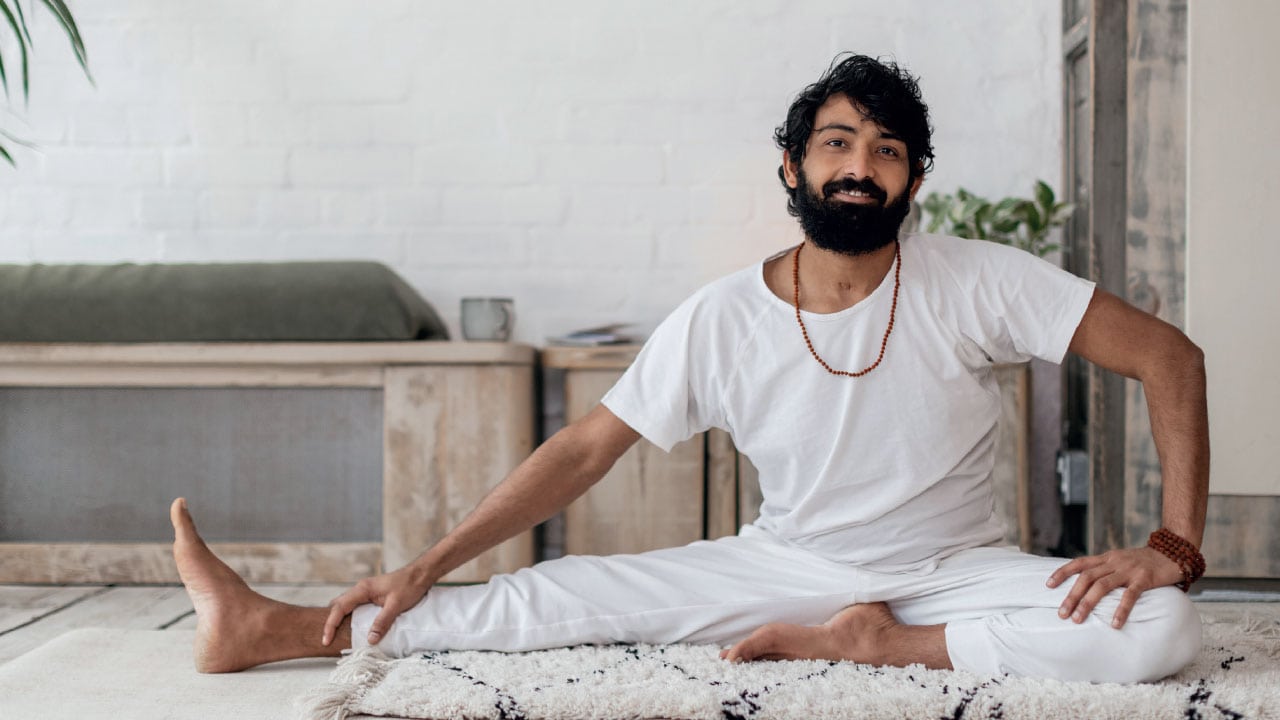
Meet our Man on the Mat
Ravi Dixit is OM's inspirational 'Man on the Mat', encouraging more men (and everyone else) to try yoga. Here, he outlines details of his own yoga journey, including an incredible comeback from injury after a road traffic accident in Goa. (And don't forget: you can even practice with him live at this year's OM Yoga Show in London this October!)
Ravi ‘the smiling yogi’ was born in India into a family of spiritual teachers and from a young age he grew up with a yoga practice as part of his daily life. In his early twenties he lived at several ashrams in Rishikesh, where he studied Hatha and Ashtanga Yoga. The years following, he worked as the resident teacher at one of the top retreats in Goa, where he led classes for thousands of students from all over the world.
In 2017, he moved to London and quickly found his way in the city as a popular teacher. He is passionate about making the principles of traditional Indian yoga understandable and relatable for everyone. In his classes, he combines movement, breath and sacred mantras in an accessible and playful way. “Yoga is not about the perfect pose, it’s about reconnecting with yourself and finding harmony between you and you,” he says. “This will bring peace and health to your body and mind.”
OM recently caught up with him to find out more.
How did you first get into yoga early on?
I started doing yoga when I was nine years old. I grew up in India. My grandfather was an astrologer and he started teaching me how to chant mantras and practice mudras. From that moment yoga was part of my daily life.
When did you start teaching?
In my early twenties, I moved to Rishikesh to study yoga in the ashrams. I practiced yoga daily with Master Yogi Ji and I naturally transitioned into teaching guests in the ashram. That’s when I really started living the yogic lifestyle and it felt like I had found my destined path in life. I think we are all forever students of yoga; the practice is mostly about understanding yourself, which is an ongoing journey.
How has your life evolved since committing fully to yoga?
Personally, it changed a lot of things in my life. Once I got deeper into my practice, parts of my life that I didn't need anymore naturally fell away and were replaced by better things. I worked in Goa for many years teaching retreat groups, which was a wonderful time as I met so many people who are still friends to this day. Professionally, it has made me more connected and patient, and teaching yoga has allowed me to travel the world. Overall, yoga has made me a more loving person.
Being from India, you teach traditional forms of yoga such as Hatha, Ashtanga and Pranayama, and you speak passionately about authenticity and going back to the roots of yoga. What would you like people to know about this?
We’re all connected to our own roots and the roots of yoga, it’s part of our natural being. Yoga is universal knowledge: although the practice has roots in Asia, yoga does not belong to me or you. Traditional or authentic to me means we don’t add our own spices to the practice, but we come back to the original recipes provided by the Rishis and Sages, the original fundamentals and essence of the asana and pranayama practice. I teach based on the values and principles of the yoga I grew up with in India, but at the same time, I’m also a young man living in London and understand the challenges of daily Western life. My intention is to make these principles and values approachable and show everyone that a practice can be simple but very beneficial to your daily life. You don’t need any fancy clothes or an expensive mat or to meditate for hours. Yoga is about connecting with yourself in any place at any time.
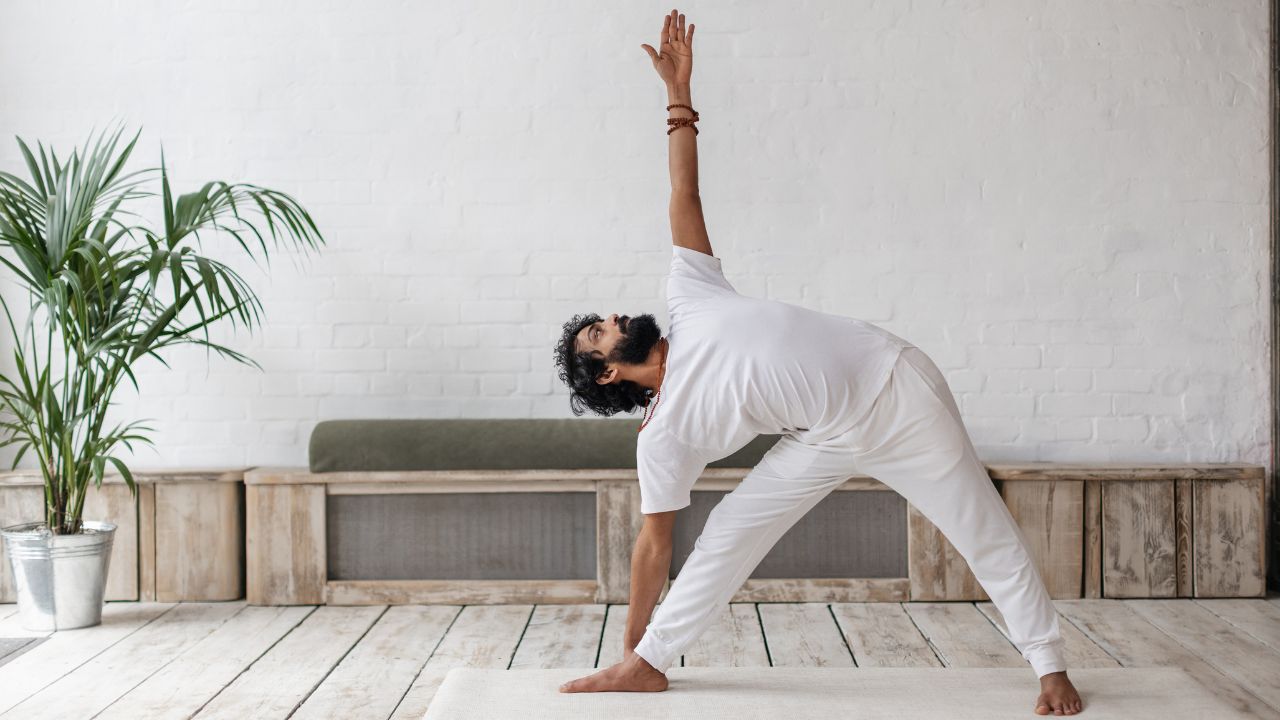
You moved to London in 2017. How was the transition for you moving from India to the UK?
When I first moved to the UK I felt very welcomed, it was so wonderful to see people were open to learning about traditional yoga. But when I first visited some yoga studios in London, I was quite shocked to see a Ganesha statue by the door of the studio, where people put their shoes in front of it, and a Buddha statue in the toilet. In Hindu culture that is considered disrespectful. That’s when I realised many people here don’t really know our culture but hopefully they will be interested to learn.
Do you think it is important to use Sanskrit in a yoga practice or when teaching?
I use Sanskrit because it’s the way I learned yoga; I would not know any other way. I don’t think it’s important to use Sanskrit if it’s not the way you learned it. It’s more important that you understand what yoga really is and have respect for the tradition, than the language you learn it in.
What would you say are the biggest benefits of practicing yoga?
Yoga is not only a physical exercise. Yoga is the union between you to you; it’s the way to get to know yourself better. Yoga creates harmony between mind, body and brain. If these are all connected properly, the result is a healthy body and a balanced life. Whatever is going on in our life, with long working hours, daily pressures, and a busy family life or social commitments, through yoga we can manage to stay balanced. For thousands of years people have been practicing yoga to maintain balance in their life. We are born with yoga, but people have forgotten they have all the tools to stay healthy and balanced.
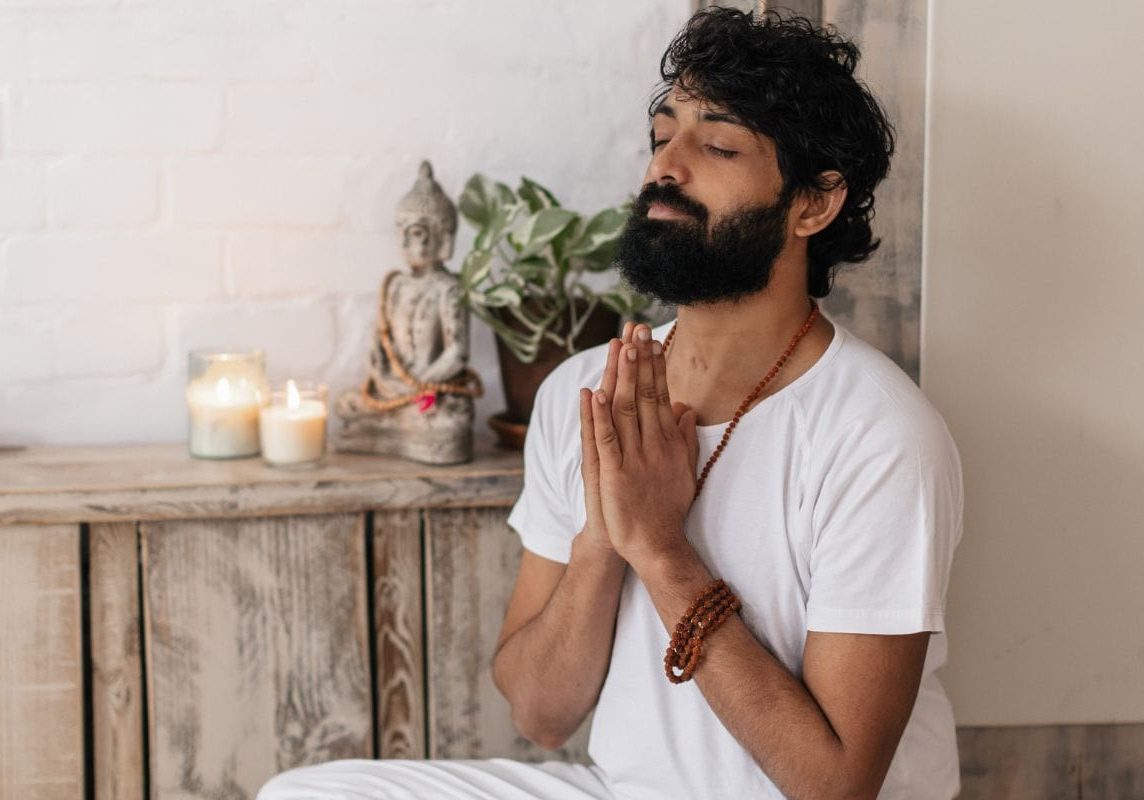
If we only see yoga as ‘fitness’ and we do not convert it into a way of life, does it still make sense to practice it regularly?
Yes it still does. Of course. A physical yoga practice still has benefits for a healthy body and mind. And with a regular physical yoga practice, hopefully a natural shift into the spiritual practice will come. It is all connected: the body, mind and the soul. One does not live without the other.
Is there something you feel is often overlooked in yoga?
Yes, I think pranayama is often forgotten. Pranayama is yogic science based on the expansion of Prana Shakti, our life force energy. Breath is a tool to improve the quality and quantity of prana in the body, but pranayama is more subtle than just breath. When we’re working with pranayama we are working with energy channels, called the nadis. These nadis are the channels where our energy flows; they exist in our body, although they are not physical, you cannot see them. Breath helps the body to maintain this life force power; when our breath is gone, life is gone. It stimulates each organ to work in the right manner and heightens our level of consciousness. Stress, poor maintenance of our health or certain thoughts can create blockages in our system. Working with the principles of pranayama can help clear our nadis to ensure energy can circulate in our system the way it is meant to be. The result is to feel lighter, fit and healthy, both physically and mentally. Since pranayama became a part of my daily life, it has helped me to understand who I am, what I am doing, why I am doing it – these are things it made very clear.
Is there one pranayama that you always include in your own practice?
Nadi Shodana Pranayama – alternate nostril breathing. This is one of the pranayama that can help to clear many issues, both mental and physical. If you apply this pranayama correctly in a daily manner, there are so many benefits. It will bring immediate mental clarity, it heals the nervous system, boosts energy and strengthens the immune system. You will feel lighter and more connected very quickly. Practicing this pranayama regularly, you don’t even really need to do many other pranayama.
As a male yoga teacher, why do you think yoga is still more popular with women than men?
I think there is a general misconception, especially in the West, that flexibility is mandatory to do yoga, and generally women just tend to be more flexible than men. When you look at the history of yoga in Asian cultures, traditionally yoga teachers were mostly male and yoga was seen as a spiritual practice and a way to maintain overall health, with less focus on the physical aspect, such as flexibility. Yoga is definitely for everyone and you can be any age or any level of fitness to benefit from yoga.
Is there anything else you’d like to say about yoga?
You don’t need a long yoga class to feel the benefits. Just doing 10 minutes of yoga a day can change your life. Doing a few postures with the right alignment and breath can have more benefit than an hour-long yoga class that is not properly aligned or grounded.
Besides yoga, what else are you passionate about?
I am truly passionate teaching yoga and seeing the change in people when they get into the practice. I’ve had students come in with anxiety and fatigue and seen them open up and bloom to better health and happiness. I love it when yoga creates community; this is why I especially enjoy doing retreats. People may arrive as strangers and leave as friends, and we have such a great time, there is so much fun and joy.
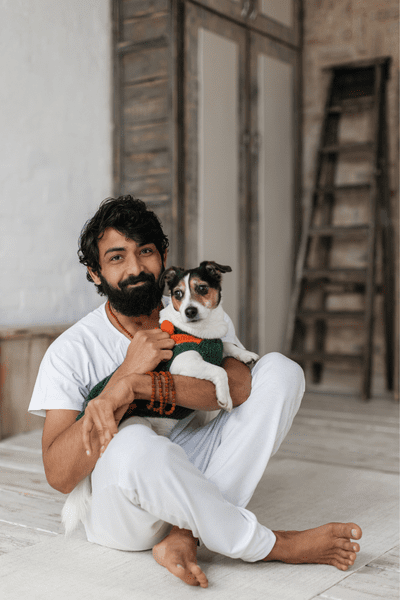
You had a severe accident a few years ago. Can you tell us about this?
In November 2020 I had an accident while riding my scooter in Goa, I don’t actually know what happened, but I was found on the side of the road with severe injuries. I had a brain injury and was in a coma, with many fractures in my face, jaw and spine. I was put on a ventilator and spent over a month in the ICU. I couldn’t breathe by myself, I could not move, speak or eat all of that time and suffered further complications such as collapsed lungs, kidney infections and sepsis. Initially, doctors did not think I would survive, or if I did, what quality of life I would have afterwards. It’s truly a miracle I survived and that I am teaching yoga again. When I left the hospital, I had lost 18kg in weight (almost 3 stone) and had to learn how to walk and eat again.
Do you feel that yoga contributed to your healing process?
Absolutely. Before I get into that, I do want to say that the doctors and nurses who looked after me really saved my life. Without them I would not be here and I am forever grateful to them. I also believe in the power of prayer and have been so blessed that many people prayed for me and sent me positive energy; I believe that is what pulled me through. Once I regained consciousness, yoga was my lifeline and rehabilitation. When I was on a ventilator and I could not move or breathe, I would chant mantras in my mind. It got me through the hardest of days. When my body slowly started recovering, I would do yoga in my hospital bed just by moving my arms and legs. And when I was finally able to breathe again, I did pranayama to get my lungs back to full health. Yoga and walking was really my only form of rehabilitation. Doctors told me that they believe I survived because my body and mind were strong from the yoga at the time of the accident.
Did the experience change you personally, or spiritually?
People often ask me if I saw anything special while I was in a coma. I honestly do not remember anything, I didn’t see a white light, or have some profound spiritual experience, but my life did change after the accident. I feel grateful for the second life that has been given to me. I have more clarity about the things that are important to me and appreciate life more. I try to consciously make more free time to relax and enjoy more time with family and friends. And something shifted inside me that made me very close to nature and animals. I love spending time and connecting with animals, their souls are so pure.
What are you working on right now?
We have several retreats this year in Bali, Spain, Greece and the UK that I am really looking forward to. I also host regular classes and workshops in London, as well as teach weekly online classes and have an online membership programme. Next year, in 2024, I’ll be starting my teacher training course, which I’m very excited about, so I’m busy with the preparations for that. Lots of great things coming!
OM has been so supportive ever since I moved to the UK and I really enjoy picking a new asana for my ‘Man on the Mat column’ each month. I also think the magazine is doing a great job at inclusivity showing a variety of people on the covers. Who knew I could be a cover model! I’m also looking forward to the OM Yoga Show this year and I will be there for the full three days, so please come say hello!
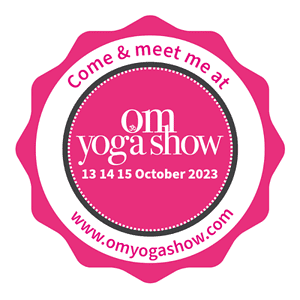
Find out more about Ravi Dixit at ravi.yoga or connect via Instagram @raviyoga_goa
Retreat with Ravi
Catch up with Ravi Dixit on retreat in 2023
• Andalusia, Spain: 17-24 June; 24 June - 1st July
• Kefalonia, Greece: 23-30 September; 30 September - 7 October


